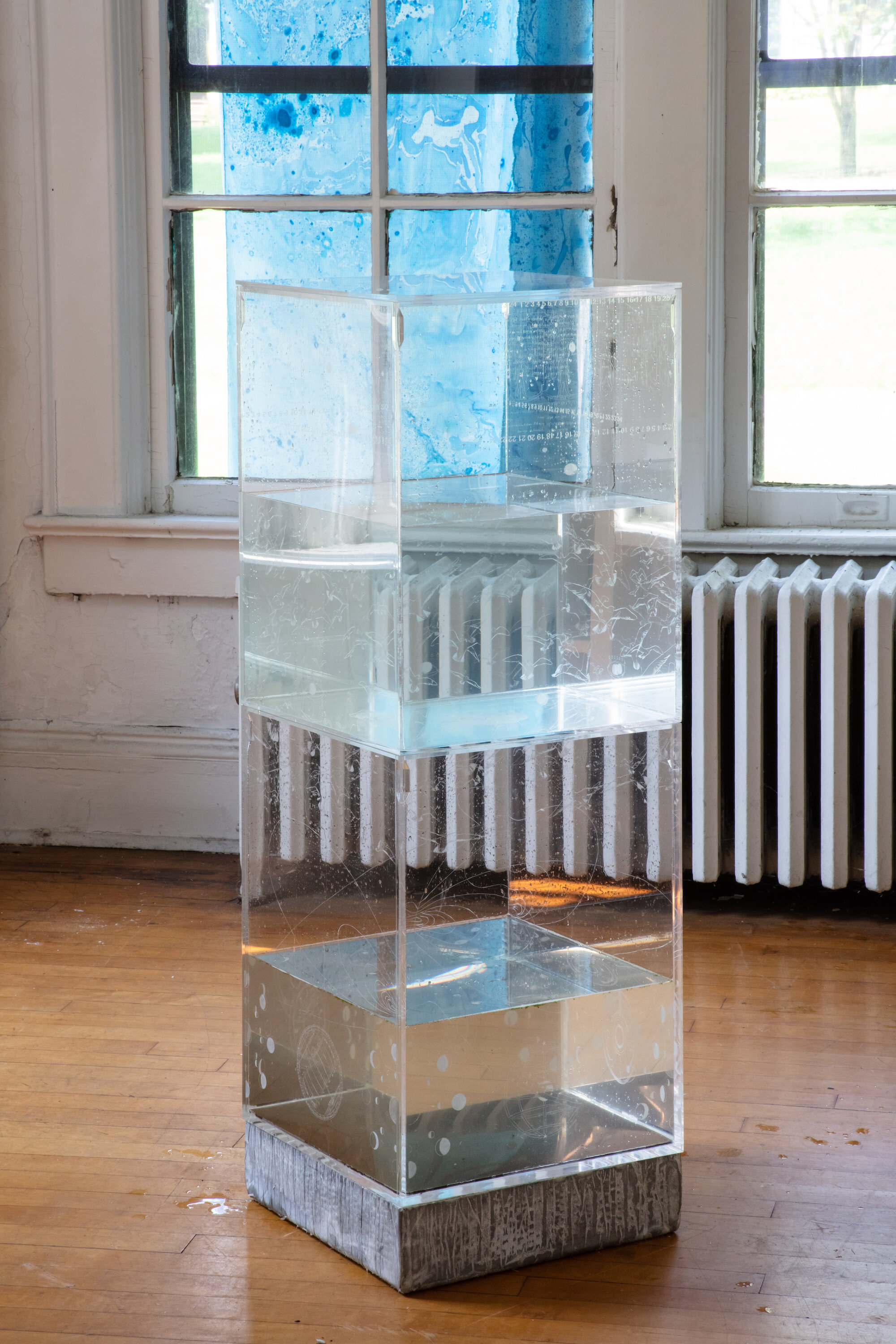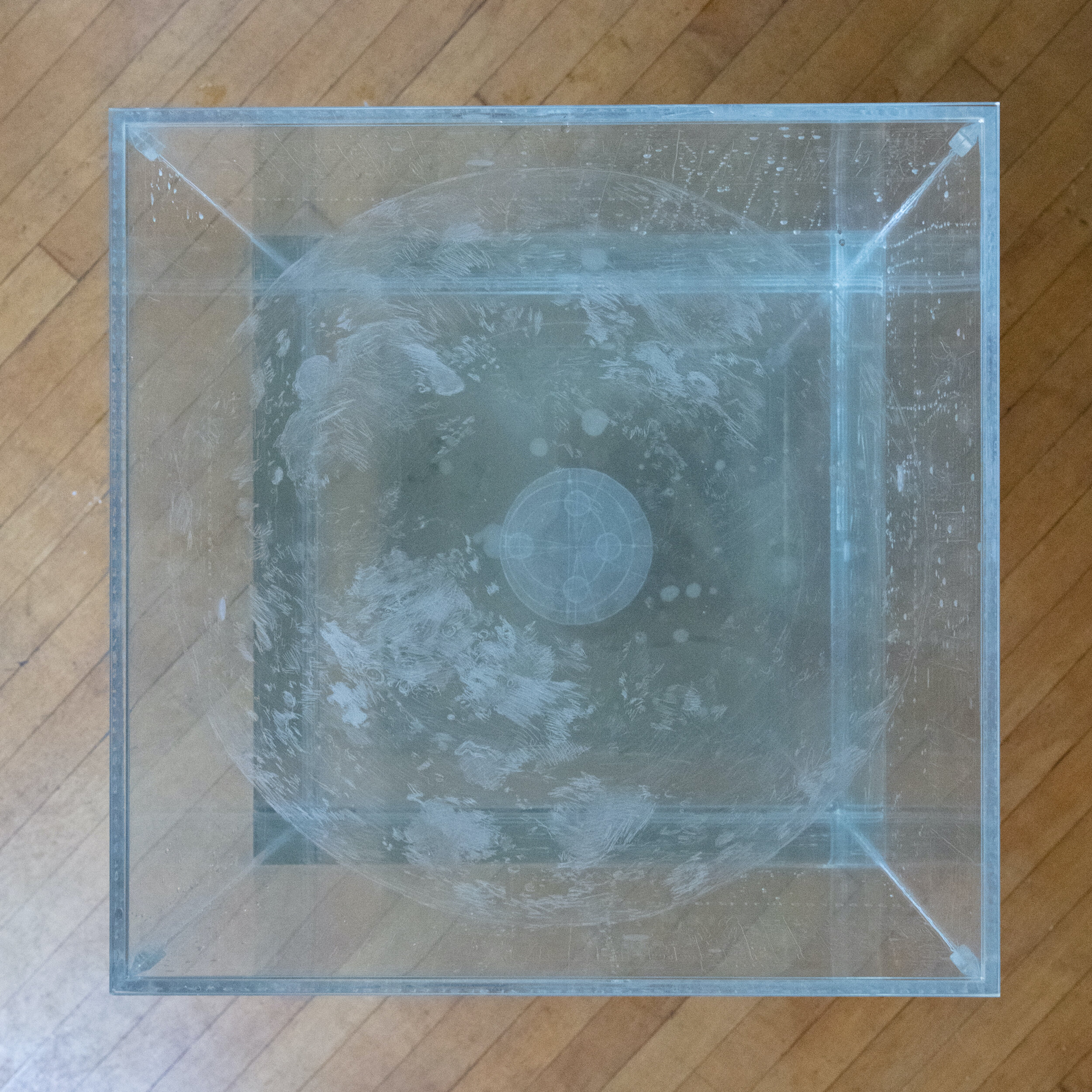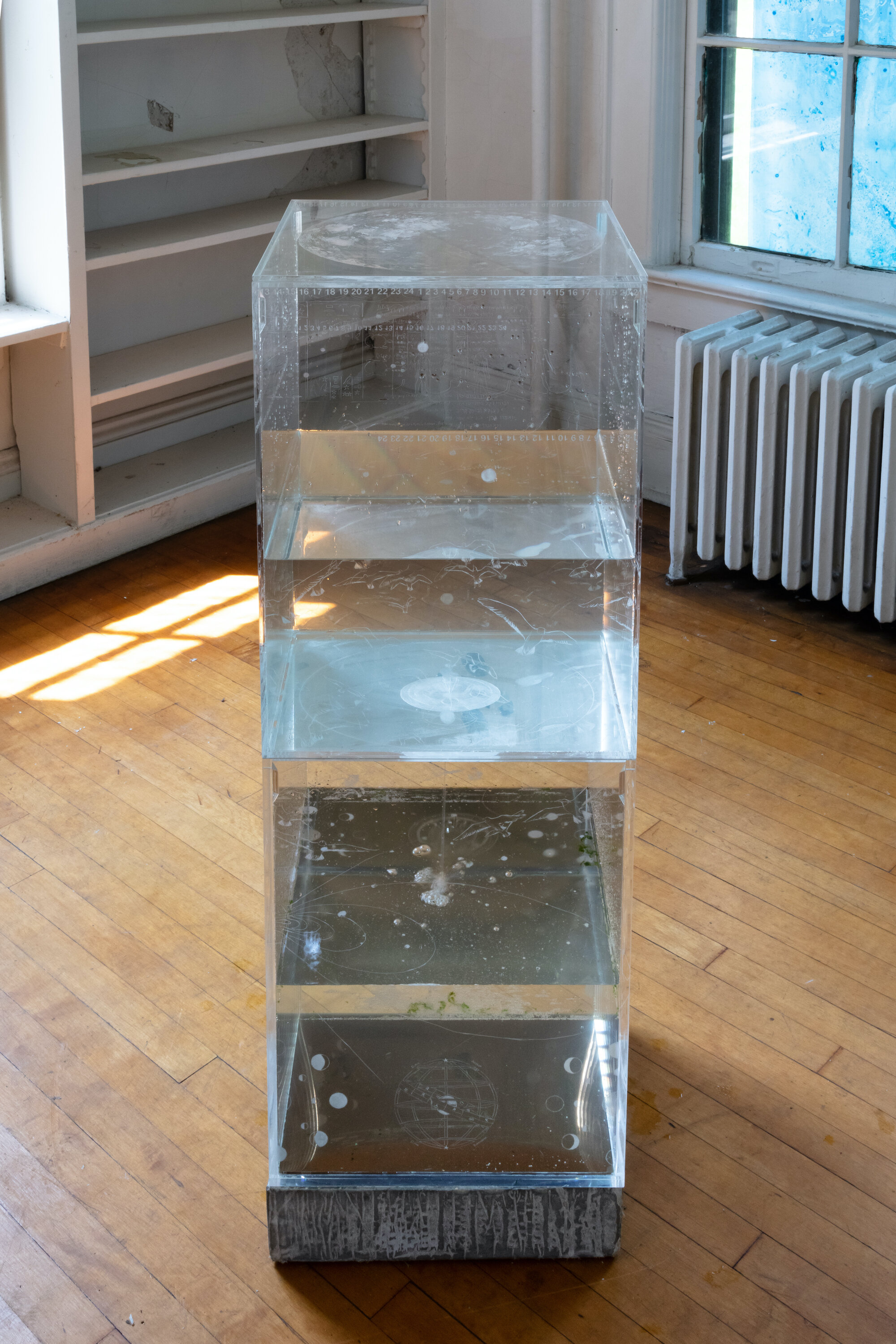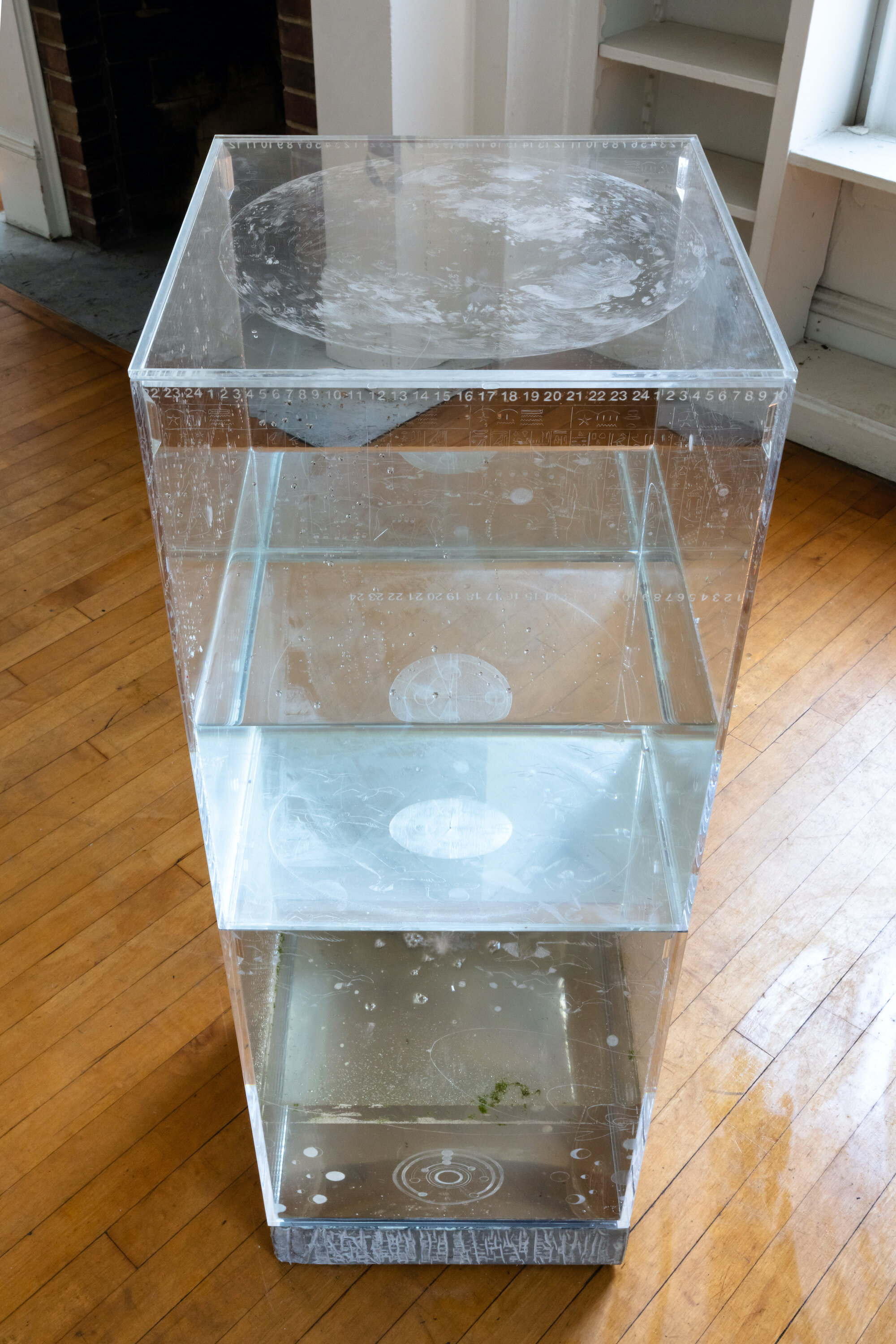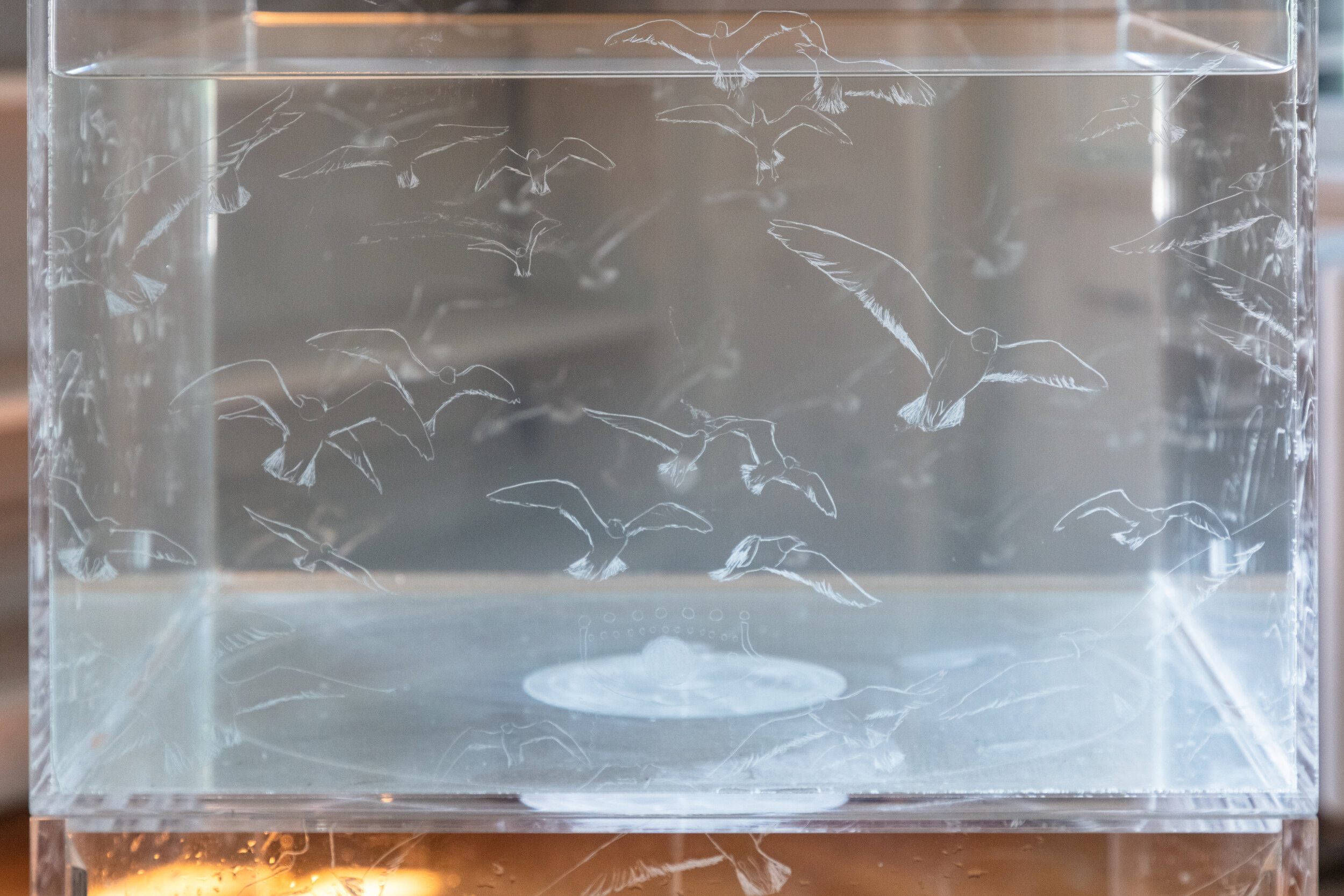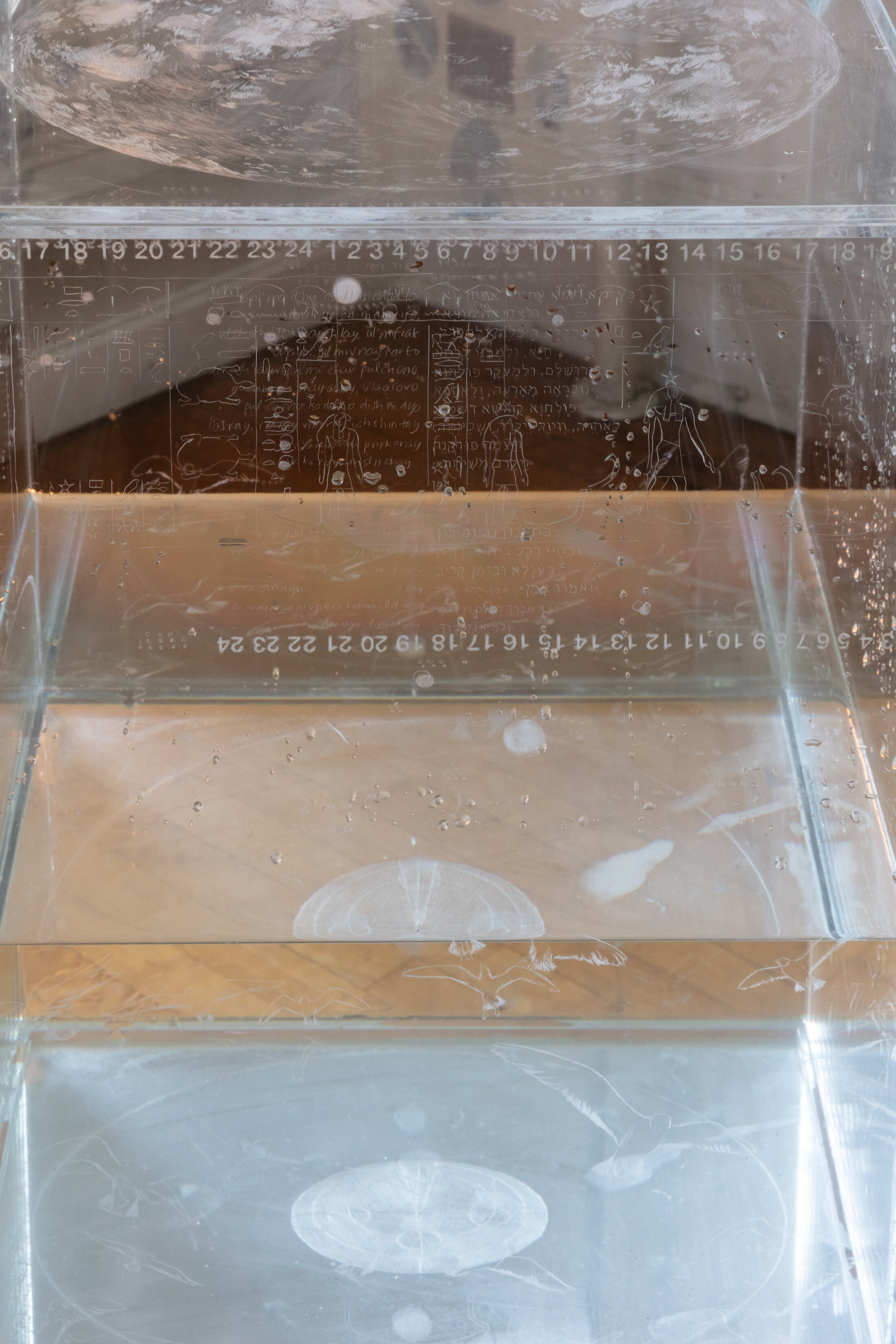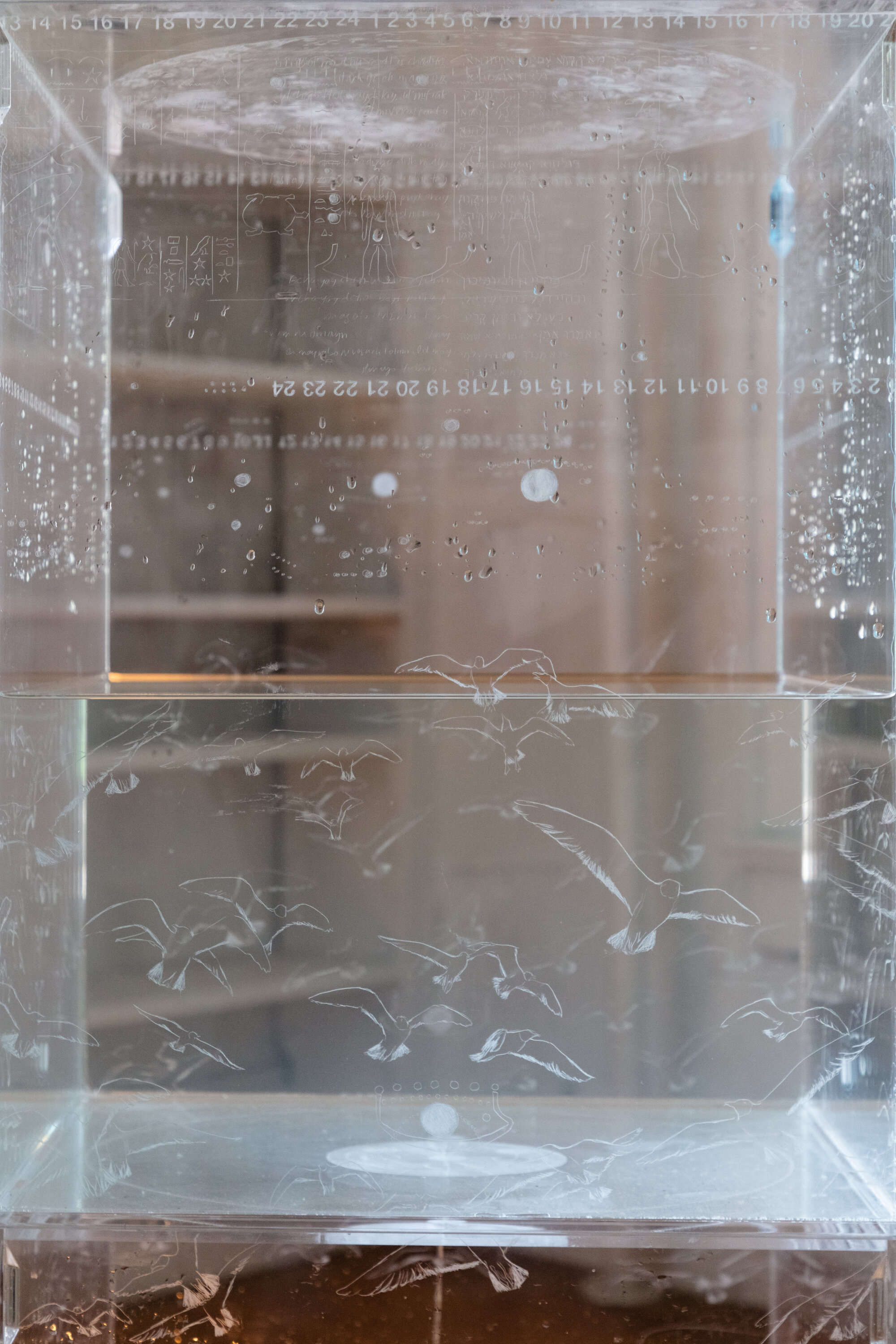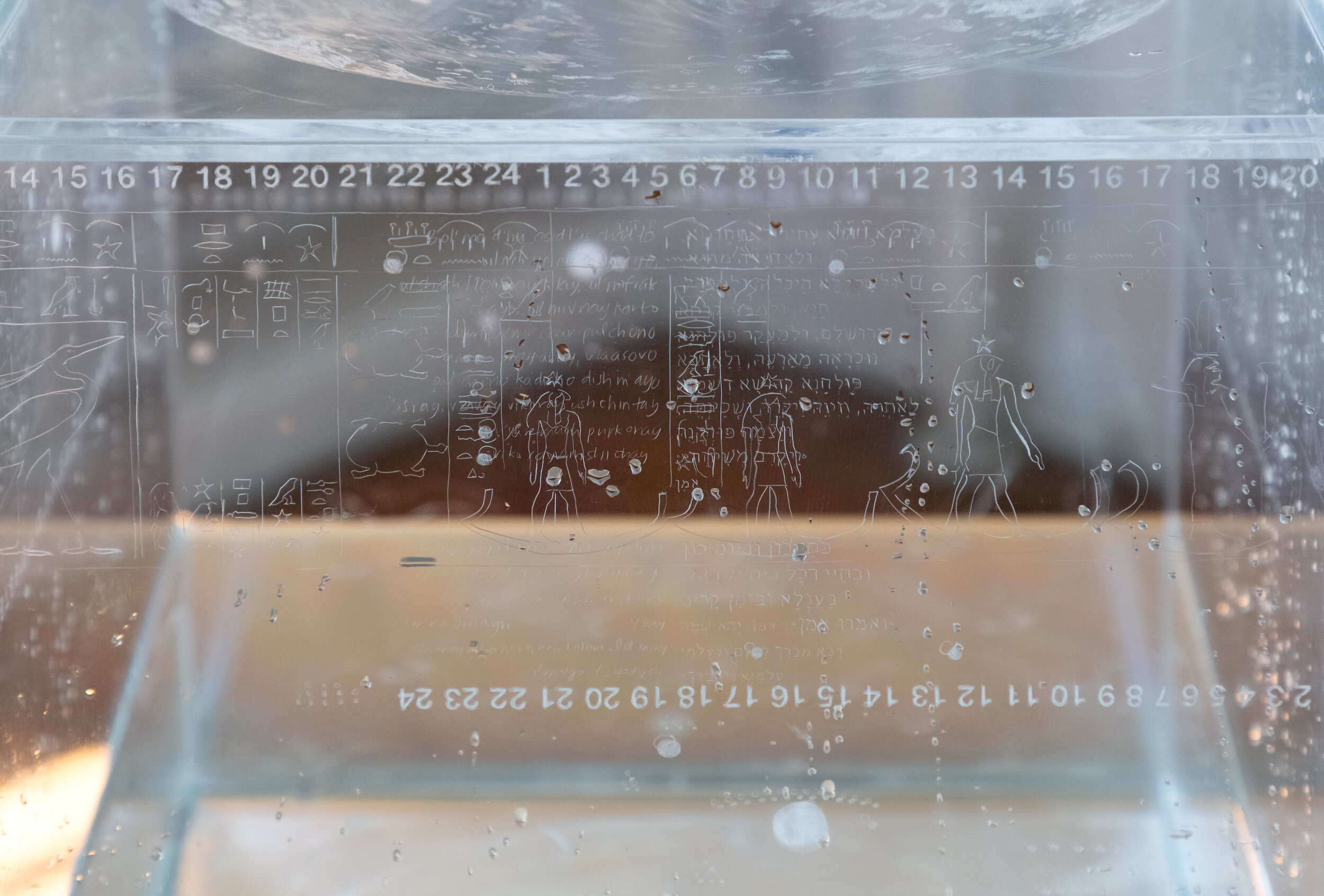The Clepsydra is an ancient time-measuring device that functions by measuring the flow of water. Used around the world in many iterations, a clepsydra (the ancient Greek name) measures time by tracking the gradual flow of water from one chamber into or out of another. Designed to be independent from what was visible or invisible due to shifting weather and atmospheric conditions (i.e. sun, moon, stars clouded over), the clepsydra relies on the interaction of gravity, pressure, and geometry.
The oldest preserved water clock from Karnak, commonly known as the Clepsydra of Karnak, is decorated with a standard decorative pattern. Originally inlaid with glass paste, the three tiered design shows the Classical Sky Picture above and the king (Amenhotep III) giving offerings to the deities of the months below. In Ancient Egypt, clepsydra were used at night to mark the passage of the hours, which was the shortest unit of time and important for religious reasons.
In Ancient Greece, the water clock was used not to keep the hours of the night but used as a timer in court proceedings — to ensure that a speaker wouldn’t speak for too long.
Further reading:
Joe Zadeh, The Tyranny of Time. https://www.noemamag.com/the-tyranny-of-time/
Down to the Hour: Short Time in the Ancient Mediterranean and Near East. Edited by Kassandra J. Miller and Sarah L. Symons. Leiden, The Netherlands: Brill, 2020. ISBN 978-90-04-41629-1 (e-book)
